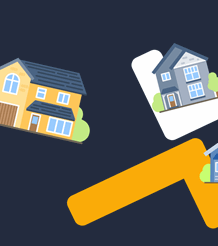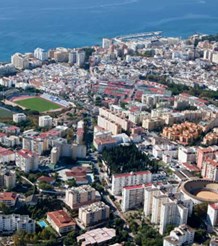
How to get a Mortgage in Spain
In some areas of Spain, such as Mallorca for example, it's almost impossible these days to rent long-term, at least not at a reasonable rental rate. It makes sense, given that Spanish property prices are still comparatively low, to buy a holiday home. However, Spain has been plagued by manifold property scandals, and it's therefore imperative to do as much research as possible before taking the decision to buy. Make sure you appoint a good, reputable lawyer, never leave anything that could become costly in the hands of developers or estate agents, and above all, ensure that every document you sign is translated, if you're not fluent in Spanish!
Unless you have already sold your primary residence and freed up a large amount of cash - or have won the lottery - you are likely to be looking to buy with a mortgage. Since Spain encourages foreign investment, non-residents can obtain a mortgage for residential property in Spain, but there are not as many of such mortgage products open to non-residents as there are for residents, and some restrictions apply.
In principal, getting a mortgage is like this:
Find out how much you can borrow - a deposit of up to 30% is typical, but your mortgage adviser can help you find the right type of mortgage for the deposit you have. You must provide the requested documentation to apply for your Spanish mortgage. The bank will usually give usually if you have the required deposit and can prove you can service the mortgage payments thereafter for the required length of the mortgage. You must apply for your NIE number at the local immigration office, usually part of a designated police station. It is a required Spanish identification number. You sign all the pre-contractual documents requested by the bank, for example Banco de España (Bank of Spain), to confirm that you understand and agree to all the conditions. Watch out for Spanish small print, which often hides interest rate hikes in vaguely worded sub-clauses! You sign the mortgage deeds at the notary along with the house purchase deeds. You move into your dream holiday or retirement home!Because there are various restrictions to the type of mortgages non-residents can obtain, it is usually best to determine beforehand what your most likely residential status will be, before choosing a product. Are you likely to retire soon or relocate for work purposes and become a permanent resident? This may well open up a better range of mortgage options.
Lenders view a second mortgage as far more risky than the mortgage you may have on your primary residence. This means such mortgages are offered at worse interest rate ranges than homes where you will live all year round. Lenders assume that anyone in danger of defaulting on payments, will do so on a holiday home rather than their main home. For this reason, lenders in Spain are more likely to look for a 30 to 40 per cent deposit, before they will allow your mortgage application to go forward. Some banks in Spain, however, allow 80 per cent mortgages, so you will only need a 20 per cent deposit in that case.
On top of that come costs, which include legal costs for your notary and any translator you might need, and various mortgage fees and taxes. This can all mount up quickly, so it is best to allow for a further 12 to 15 per cent of the purchase price to pay for purchase costs.
How do Spanish Lenders assess your creditworthiness?
This can vary from lender to lender, but most Spanish banks will ask you to provide a list of all your monthly outgoings (you will need to provide proof of this, such as bank statements for the previous three to six months before applying for example), and will take into account any existing loan repayments you are already making. This will show them whether or not you can still afford to take on more debt.
Lenders will use an affordability ratio based on your net income per annum after tax, and will determine if your new debt exceeds 30 to 35 per cent of your net earnings; if so, you will be turned down, but if you stay within that margin, you should see your application go forward. You will typically be required to complete a personal balance sheet to demonstrate your existing financial arrangements, and to show documents that prove how much you earn and how much you spend per month.
Most Spanish mortgages are arranged on a tracker basis, in line with the European Central Bank's lending rates, the Euribor. Lenders offer mortgages at a margin above the Euribor rate, such as Euribor plus one per cent. Here it is important to check the mortgage offer fine print, for Spanish lenders have been slow to pass on any savings to customers, when the Euribor goes down, but very quick to apply increases. At the time of writing, the average interest rates offered in Spain stand at around 4.16 per cent. You should also take into account any exchange rate fluctuations - if you are paid your salary in Sterling, which is weaker than the Euro at present, this will impact on the monthly outgoings for your loan.
Costs of arranging mortgages may also be different to the way lenders handle mortgages in your own country. Expect to pay mortgage deed duty at around 1.8 per cent of the loan, and bank fees typically set at 1 to 1.5 per cent of the mortgage amount. Every single document related to your mortgage must be signed off at the notary office, which means you have to allow a further 0.5 per cent of the loan value to pay for the notary service.
In addition, you must pay a valuation fee, a broker fee, if you're using a broker to arrange your Spanish mortgage, and 10 per cent VAT, if you have chosen to purchase a brand new property. If you are buying a second-hand property, then a sales tax of between 5 and 10 percent of the overall value of the property becomes payable upon completion. The rateable or taxable value of your property varies from type of property and location, and in some parts of Spain there are also local charges to pay. It is incredibly important to hire a reputable, experienced solicitor, preferably a law office that is able to handle all work in two languages, your own and Spanish, so you are not experiencing endless delays waiting for documents to be translated.
Whether you go direct or use a broker is usually down to personal choice. However, there are quite a few fraudsters around who will charge an upfront fee - and never bother to arrange your mortgage with the lender. Before appointing somebody, ask for advice from neighbours, friends or colleagues.
Brokers can be very useful because many Spanish lenders do not offer set mortgage terms, but tend to work on a negotiated, individual basis client by client. Therefore, having someone working for you who speaks Spanish fluently and knows the system inside out can work out very much in your favour. Look out for mortgage brokers who provide you with an initial free, no obligation, consultation, such as SPF or IMS. They will explain their services to you, if you're not sure which route to take.
It will, of course, cost more to use a broker, about 0.5 to 1 per cent of the overall property value in fact. But if the broker can arrange for a good deal for you, you will be recouping this cost over time.
Unless you are fluent in written and spoken Spanish and understand legal jargon, it is not advisable to go direct - Spanish mortgages are legally binding, and thus any mistakes or misunderstanding can be very costly indeed. Look at quite a few major Spanish bank websites to compare rates (use Google Translate, if the sites are only Spanish-spoken) and also check on the nearest Spanish consulate or embassy websites for links to English-language portals that deal with recommended notary or translation services in the area you wish to buy in. Check out websites run by expats - they can be invaluable for advice on who to avoid and who to trust with regard to brokers and estate agents.
If the Spanish lender has a branch in your own country, even better, as you may be able to arrange a mortgage through them for your property in Spain. Abanca for example have an office in London, and Santander, one of the largest mortgage providers in Spain, may also be able to put British buyers in touch with their relevant banking counterpart in Spain. Their website also has a wide range of mortgage products on offer, including tracker, combination deals and fixed rate deals, and you can use their nifty mortgage calculator to estimate the amount you may be able to borrow and find out if you're eligible on the site, too.
All Spanish lenders must be authorised by the Bank of Spain and are subject to the Bank's supervision. If you're using the Bank of Spain (Banco de España), you will have access to banking staff trained to deal with overseas buyers. They will be able to guide you through the home-buying purchase in your own language - but don't forget, they are not on your side money-wise, but want to get the best deal for their bank.
The maximum length of a mortgage term you can get is 25 years and the borrows age at the end of the loan period must not exceed 75 years. The monthly outgoings you present for mortgage eligibility must include home insurance costs, as this is mandatory by Spanish law. Home valuation fees charged should not exceed 500 euros.






